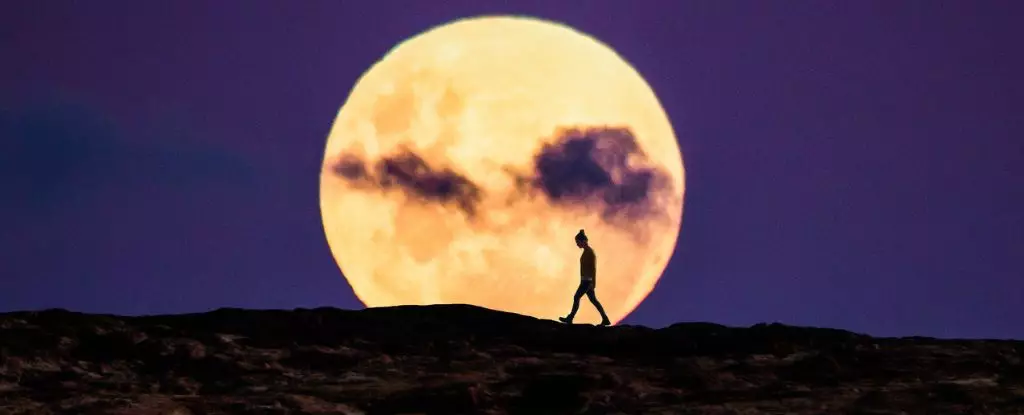The captivating allure of a supermoon is upon us once again, as the biggest and brightest version of this lunar spectacle is set to grace our skies this week. According to NASA, this extraordinary celestial event will be visible from Tuesday evening through Friday morning, allowing ample time for sky-gazers to indulge in its splendor. However, there’s a specific window between Wednesday evening and Thursday morning when the moon will be at its closest point to Earth—known as perigee—rendering it particularly radiant.
The term “supermoon” describes the occurrence when a full moon aligns closely to perigee, the point in its elliptical orbit where it is nearest to the Earth. This alignment results in a moon that appears significantly larger and brighter than usual. This week’s supermoon is poised to shine approximately 14% brighter than its average counterpart, according to Space.com. At about 8:50 p.m. ET on Wednesday, the moon will reach perigee, situated around 221,938 miles from our planet—nearly 17,000 miles closer than average.
The optimal experience of this magnificent phenomenon will occur at moonrise on Wednesday and Thursday. Wes Ryle, an astronomer at the Cincinnati Observatory, highlights the way the moon appears larger when close to the horizon, giving viewers a unique optical illusion aided by terrestrial landmarks such as trees and buildings. Interested observers can ascertain the exact moonrise time for their location using online calculators that specialize in lunar events.
Witnessing the supermoon does not necessitate any special tools or equipment. Jennifer L. Hoffman, director of the Chamberlin Observatory, emphasizes that the supermoon is accessible to anyone, regardless of their living environment, making it an enjoyable event for city dwellers and rural residents alike. However, for those who do have access to a telescope, Ryle recommends taking a closer look, as the immense detail visible in the telescope adds another layer of beauty to the experience.
This particular supermoon is the third in a series of four consecutive supermoons throughout the year, with the subsequently anticipated one scheduled for November. What sets this event apart is the remarkable concurrence of perigee and the full moon, making it the most significant supermoon of the year. Coincidentally, this moon is also known as the Hunter’s Moon, a name that pays homage to the autumn season when wildlife prepares for winter and hunters began their preparations.
Supermoons are not particularly rare; they occur frequently, so those who miss this week’s spectacle needn’t fret—they won’t have to wait long for another opportunity. Ryle mentions that clusters of supermoons often occur in succession, meaning the sky will again provide similar delights shortly. It’s essential to note that occasionally a supermoon will coincidentally align with a new moon, which diminishes the visual brightness expected with a full supermoon phase.
As we prepare for the arrival of this year’s most dazzling supermoon, it serves as a reminder of the grandeur and beauty of celestial events. With easy visibility and an opportunity to share this occasion with others, the supermoon beckons to all backyards and balconies, promising a memorable experience that connects us to the wonders of the universe. Whether observed with the naked eye or through a telescope, the supermoon invites us to pause and appreciate the breathtaking beauty above us. Unquestionably, it’s a celestial event worth celebrating and sharing with friends and family alike.


Leave a Reply